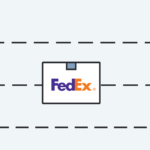When a customer is browsing an online sportswear store, a pair of sleek running shorts might catch their eye. They click on the item to reveal a variety of colors, including classic black, bold red, and vibrant blue, each with contrasting stitching. They come in a range of sizes and two fabric options: a lightweight, breathable mesh fabric or a soft, moisture-wicking bamboo blend.
These options are product variants, and they are a way for businesses to appeal to a wider range of customers. Read on to learn more about the benefits of product variants.
What are product variants?
Product variants are different versions of a product that share the same basic characteristics but offer customers different options in terms of size, color, material, style, or other attributes. These variations allow companies to manage a more diverse inventory within a single product line while catering to a wider range of customer tastes and needs.
Offering product variations can help a company increase its appeal in the marketplace. Increase sales Enhance your potential and Personalized Shopping Experience For customers.
Below are some examples of product variations:
- Dress shirts in a variety of colors (white, blue, grey) and sizes (S, M, L, XL)
- Sneakers available in a variety of color combinations (white and blue, white and green, white and black) and material options (leather, canvas)
- Smartphones available in different storage capacities (128 GB, 256 GB) and colors (black, silver, gold)
The benefits of product variations
Product variants provide options. The benefits of offering product variants include:
Catering to a variety of tastes
Different sizes, colors, and other specific features can attract customers with different tastes and needs, helping you capture a larger market share and expand your customer base. For example, selling T-shirts in navy blue, forest green, and burgundy in sizes from XXS to 4XL can appeal to a wider range of people.
Increased sales and revenue
Offering product options to your customers can increase sales and revenue. For example, offering women’s running shoes in both standard and wide widths can potentially capture sales from customers who would otherwise abandon a purchase if their preferred size was not available.
Increased customer satisfaction and loyalty
Offering different product variants allows us to provide a more personalized experience by respecting the individual needs and preferences of our customers. This allows us to: Customer Satisfaction Customers will feel that you are catering to their specific needs, which will increase their loyalty and attachment.
Collect valuable customer data
By analyzing which product variations are most popular, Target AudienceYou can gain valuable insights into your customers’ preferences and behavior. This data will be your source of information for the future. Product development, Marketing Strategyand Inventory control You have a decision to make. For example, if you notice that your hazelnut flavor of gourmet coffee is selling better than other flavors like vanilla or caramel, you can choose to focus on promoting and stocking the hazelnut flavor or introduce a new hazelnut-related flavor to capitalize on its popularity.
Product Variation Features
Product variants have many differentiating features:
barcode
Assigning a unique barcode to each product variant streamlines inventory management and tracking. This is especially useful when you have products that have multiple options, such as different flavors, sizes, etc. Variant-specific barcodes make them easier to monitor. Stock Levels,Rationalization Order Fulfillmentand reduce errors supply chain.
price
Product variations enable you to set different prices for different versions of the same product, based on factors like size, color, material, etc. For example, you might sell a medium version of a kitchen pot for a lower price than a larger size.
stock
Product variants enable you to track and manage inventory levels for specific versions of a product. out of stockOptimize your storage space and make informed reordering decisions. By monitoring variant-specific inventory data, you can identify which variants are selling the best and adjust your stock accordingly to always have the most popular options on hand.
Photos and Videos
Presenting each product variant with high-quality photos and videos allows customers to see the specific details and differences between the options. This visual content helps customers make an informed decision. Providing multiple images and 360-degree views of each variant makes your products more appealing and compelling. Immersive Customer Experience.
explanation
You can use the same description for your variations, but consider creating a detailed and compelling description. Product Description Are there key features or benefits of each option that you want to highlight? For example, if your store sells leather and cotton jackets, you could explain that leather jackets are perfect for winter and cotton jackets are great for crisp fall days. These details will help guide your customers in making the choice that best suits their needs.
Shipping Weights and Dimensions
Specifying the weight and dimensions of each product variant ensures accurate shipping costs and helps in optimization. Packaging and logisticsThis information allows you to provide customers with accurate shipping costs and expected delivery times, reducing the risk of unexpected costs and delays.
promotion
Product variants offer an opportunity for targeted promotions and marketing campaigns. By leveraging variant selectors and filters, you can highlight specific variants that are on sale, new arrivals, or seasonal products. This targeted approach helps you drive sales of specific variants and clear out your inventory. Additionally, bundle Deals and multi-buy promotions that encourage customers to buy multiple variations of a product Average Order Value.
Product Variation FAQs
What is the difference between a product model and a variant?
A product model is a base version of a product, while a variant is a specific version of a product with different attributes such as color, material, etc. For example, a T-shirt model may be green, and variants may be blue or yellow.
What are some examples of product variations?
An example of a product variation would be a gourmet chocolate bar with different cocoa content (60%, 70%, 80%) and different ingredients (almonds, sea salt, dried raspberries) to cater to different tastes.
Can I add product variants in Shopify?
Yes, you can add it in Shopify Product variations Add it to your online store. You can create variants based on options like size, color, material, style, and set different prices, SKUs, and stock levels for each variant.
Do product variations increase sales?
Offering product variants caters to a wider range of customer tastes and needs, increasing sales. By offering customers options that fit their specific requirements, businesses can improve customer satisfaction, attract a wider range of customers, and increase sales.






